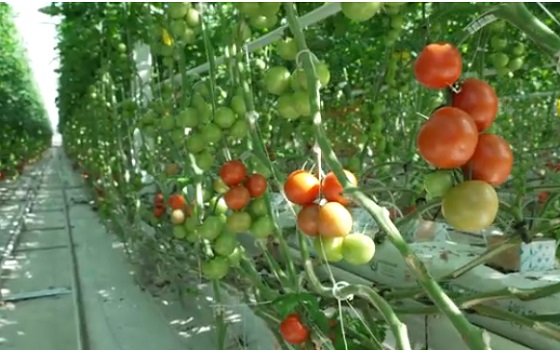Agriculture
How Canadian Dairy Farms Can Adjust to New Dairy Demand
How Canadian Dairy Farms Can Adjust to New Dairy Demand
Many changes occurred around the world as a result of the coronavirus pandemic. In Canada, while schools and businesses closed, consumers flocked to the supermarkets to buy essentials.
Perishable goods flew off the shelves, resulting in limits being placed on items like dairy and poultry. The standard distribution system schedule put in place for dairy products could not keep up with buyers’ increased shopping.
While retail demand from grocers skyrocketed, orders from the foodservice industry plummeted. This has resulted in unforeseen fluctuations in the dairy market.
Hotels, restaurants, schools and eateries are closed or operating at limited capacity. As a result, there is now an enormous surplus of milk that has nowhere to go. Farmers are not equipped with storage spaces to accommodate the excess supply. Unlike agriculture products like potatoes, milk has to be sold immediately or risk spoilage.
Cows will continue producing milk, regardless of fluctuations in the market. While farmers have the option to reduce the size of their herd or change diet or nutrition, these things could prove detrimental when the market stabilizes.
The Supply Management System
A supply management system controls production quotas and imports for Canadian dairy, chicken, turkey and eggs. It was established in the1970s to coordinate production and demand while simultaneously controlling imports. By operating under this method, prices are stabilized for both producers and consumers.
A national agency represents each industry, and they are in charge of setting production levels that match provincial demand. Farmers in each province are allocated production quotas that are meant to prevent surpluses or shortages.
The original quotas were based on consumer needs pre-pandemic. As a result of these unforeseen events, farmers must now adjust to the new Canadian dairy demand. Here are four main ways farmers can adapt to the changing times.
- Dump the Milk
Producers say that discarding raw milk is inevitable at this stage. Farmers are reporting that they have been asked to take turns dumping milk. Although they’re paid for it, the waste could amount to as much as 5 million litres every week.
This disposal method is unsustainable and should only be utilized while the market is above capacity. Cows must continue to be milked to keep them comfortable and healthy, and production must continue to ensure product availability in retail stores.
- Donate to Food Banks
Rather than dumping milk, some farmers have begun donating to food banks to support Canadians in need. While this is a positive form of dispersing the milk surplus, it has the potential to overwhelm food banks that may not have the storage capacity to support this influx.
Additionally, the raw milk provided from farmers must be processed, which complicates the standard donation process.
- Improve Operations
Dairy farmers should focus on improving operations to become more efficient and cost-effective. Many producers have begun investing in updated equipment and robotics to save time and money. Competition is set to increase as a result of import growth projected for the next decade. To maintain a market edge, operations should be improved and simplified wherever possible.
- Expand or Retire
In 2019, the Canadian federal government announced an aid package valued at $1.75 billion to compensate supply-managed dairy producers over an eight-year period. The Dairy Direct Payment Program is one part of this aid package and provides $345 million payments as compensation during 2019 and 2020.
The aid package was proposed as a result of import shifts. The Canadian government has opened part of its domestic market to foreign producers as part of several free-trade negotiations. To adapt to increased competition from foreign products, Canadian producers should plan to expand their operations or retire. Larger farms will be able to sustain demand while simultaneously upgrading their methods to be constantly improving.
Smaller producers may not be able to afford the necessary production updates to keep up with competitors.
Future Demand
These are unprecedented circumstances. As schools, businesses and restaurants reopen, dairy demand will increase. With indoor capacity requirements and shifts in consumer trends, consumption levels will undoubtedly continue to fluctuate.
While farmers should take steps to dispose of surplus responsibly, they should not halt production or decrease their operation size.
Read more from Emily Folk

I’m Emily Folk, and I grew up in a small town in Pennsylvania. Growing up I had a love of animals, and after countless marathons of watching Animal Planet documentaries, I developed a passion for ecology and conservation. You can read more of my work by clicking this link: Conservation Folks.
Canadian Federal Government Taking Measures to Reduce Impact of COVID-19 on Agriculture
Agriculture
Canada’s air quality among the best in the world

From the Fraser Institute
By Annika Segelhorst and Elmira Aliakbari
Canadians care about the environment and breathing clean air. In 2023, the share of Canadians concerned about the state of outdoor air quality was 7 in 10, according to survey results from Abacus Data. Yet Canada outperforms most comparable high-income countries on air quality, suggesting a gap between public perception and empirical reality. Overall, Canada ranks 8th for air quality among 31 high-income countries, according to our recent study published by the Fraser Institute.
A key determinant of air quality is the presence of tiny solid particles and liquid droplets floating in the air, known as particulates. The smallest of these particles, known as fine particulate matter, are especially hazardous, as they can penetrate deep into a person’s lungs, enter the blood stream and harm our health.
Exposure to fine particulate matter stems from both natural and human sources. Natural events such as wildfires, dust storms and volcanic eruptions can release particles into the air that can travel thousands of kilometres. Other sources of particulate pollution originate from human activities such as the combustion of fossil fuels in automobiles and during industrial processes.
The World Health Organization (WHO) and the Canadian Council of Ministers of the Environment (CCME) publish air quality guidelines related to health, which we used to measure and rank 31 high-income countries on air quality.
Using data from 2022 (the latest year of consistently available data), our study assessed air quality based on three measures related to particulate pollution: (1) average exposure, (2) share of the population at risk, and (3) estimated health impacts.
The first measure, average exposure, reflects the average level of outdoor particle pollution people are exposed to over a year. Among 31 high-income countries, Canadians had the 5th-lowest average exposure to particulate pollution.
Next, the study considered the proportion of each country’s population that experienced an annual average level of fine particle pollution greater than the WHO’s air quality guideline. Only 2 per cent of Canadians were exposed to fine particle pollution levels exceeding the WHO guideline for annual exposure, ranking 9th of 31 countries. In other words, 98 per cent of Canadians were not exposed to fine particulate pollution levels exceeding health guidelines.
Finally, the study reviewed estimates of illness and mortality associated with fine particle pollution in each country. Canada had the fifth-lowest estimated death and illness burden due to fine particle pollution.
Taken together, the results show that Canada stands out as a global leader on clean air, ranking 8th overall for air quality among high-income countries.
Canada’s record underscores both the progress made in achieving cleaner air and the quality of life our clean air supports.
Agriculture
Growing Alberta’s fresh food future

A new program funded by the Sustainable Canadian Agricultural Partnership will accelerate expansion in Alberta greenhouses and vertical farms.
Albertans want to keep their hard-earned money in the province and support producers by choosing locally grown, high-quality produce. The new three-year, $10-milllion Growing Greenhouses program aims to stimulate industry growth and provide fresh fruit and vegetables to Albertans throughout the year.
“Everything our ministry does is about ensuring Albertans have secure access to safe, high-quality food. We are continually working to build resilience and sustainability into our food production systems, increase opportunities for producers and processors, create jobs and feed Albertans. This new program will fund technologies that increase food production and improve energy efficiency.”
“Through this investment, we’re supporting Alberta’s growers and ensuring Canadians have access to fresh, locally-grown fruits and vegetables on grocery shelves year-round. This program strengthens local communities, drives innovation, and creates new opportunities for agricultural entrepreneurs, reinforcing Canada’s food system and economy.”
The Growing Greenhouses program supports the controlled environment agriculture sector with new construction or expansion improvements to existing greenhouses and vertical farms that produce food at a commercial scale. It also aligns with Alberta’s Buy Local initiative launched this year as consumers will be able to purchase more local produce all year-round.
The program was created in alignment with the needs identified by the greenhouse sector, with a goal to reduce seasonal import reliance entering fall, which increases fruit and vegetable prices.
“This program is a game-changer for Alberta’s greenhouse sector. By investing in expansion and innovation, we can grow more fresh produce year-round, reduce reliance on imports, and strengthen food security for Albertans. Our growers are ready to meet the demand with sustainable, locally grown vegetables and fruits, and this support ensures we can do so while creating new jobs and opportunities in communities across the province. We are very grateful to the Governments of Canada and Alberta for this investment in our sector and for working collaboratively with us.”
Sustainable Canadian Agricultural Partnership (Sustainable CAP)
Sustainable CAP is a five-year, $3.5-billion investment by federal, provincial and territorial governments to strengthen competitiveness, innovation and resiliency in Canada’s agriculture, agri-food and agri-based products sector. This includes $1 billion in federal programs and activities and $2.5 billion that is cost-shared 60 per cent federally and 40 per cent provincially/territorially for programs that are designed and delivered by provinces and territories.
Quick facts
- Alberta’s greenhouse sector ranks fourth in Canada:
- 195 greenhouses produce $145 million in produce and 60 per cent of them operate year-round.
- Greenhouse food production is growing by 6.2 per cent annually.
- Alberta imports $349 million in fresh produce annually.
- The program supports sector growth by investing in renewable and efficient energy systems, advanced lighting systems, energy-saving construction, and automation and robotics systems.
Related information
-

 Bruce Dowbiggin2 days ago
Bruce Dowbiggin2 days agoWayne Gretzky’s Terrible, Awful Week.. And Soccer/ Football.
-

 espionage1 day ago
espionage1 day agoWestern Campuses Help Build China’s Digital Dragnet With U.S. Tax Funds, Study Warns
-

 Focal Points1 day ago
Focal Points1 day agoCommon Vaccines Linked to 38-50% Increased Risk of Dementia and Alzheimer’s
-

 Opinion2 days ago
Opinion2 days agoThe day the ‘King of rock ‘n’ roll saved the Arizona memorial
-

 Automotive17 hours ago
Automotive17 hours agoThe $50 Billion Question: EVs Never Delivered What Ottawa Promised
-

 Agriculture2 days ago
Agriculture2 days agoCanada’s air quality among the best in the world
-

 Business1 day ago
Business1 day agoCanada invests $34 million in Chinese drones now considered to be ‘high security risks’
-

 Health1 day ago
Health1 day agoThe Data That Doesn’t Exist






